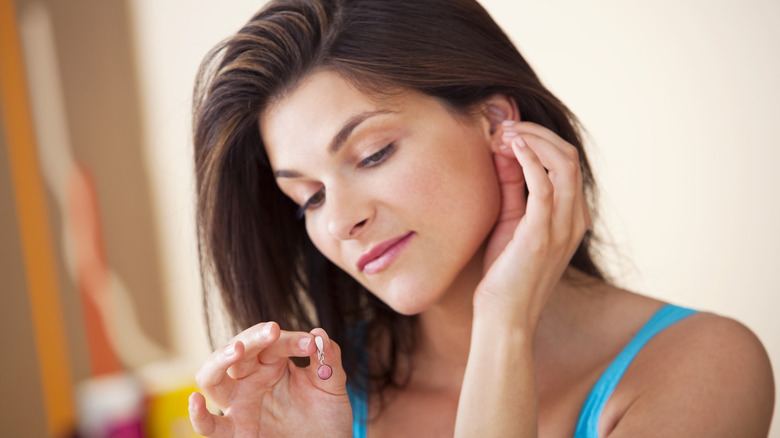You Should Stop Wearing Jewelry If This Happens To You
It can be loads of fun to shop for jewelry and wear what you find, whether it's rings, earrings, bracelets, or necklaces. However, you might need to stop wearing these items if they begin to impact your health.
Do you ever experience itching, redness, or swelling where your jewelry comes in contact with your skin? The symptoms you experience could be mild, moderate, or severe. If they're mild, you might just brush them off, but if you've experienced the more severe ones like blisters, scaling, and rashes, you might want to pay closer attention to your body's reaction (via Cleveland Clinic). If you've experienced these reactions from your jewelry, you are certainly not alone, but what does this mean and what can you do about it? Even if your symptoms are mild, there are some steps you can take to prevent these reactions from happening when you wear your favorite rings, earrings, bracelets, and necklaces.
Causes and treatments for metal allergies
If you have these symptoms while wearing certain pieces of jewelry, you should stop wearing them, as you could be allergic to the metals in the items. This allergic reaction is called contact dermatitis. The Cleveland Clinic notes that the metals most likely to cause this allergic reaction are nickel, cobalt, and chromates. According to the American Academy of Dermatology (AAD), about 18% of people living in North America are allergic to nickel, including 11 million children in the United States.
Your dermatologist can help you figure out which metals you're allergic to through testing. Once you have this information, you'll know which metals to avoid. If you're allergic to nickel, you'll have to be careful with anything containing it, which may include your phone, zippers, buttons, coins, keys, doorknobs, and eyeglasses (via AAD).
When choosing new jewelry, go for surgical grade steel, sterling silver marked 925, and 14k gold or higher (via Cleveland Clinic). If you have a reaction that causes a blistering, recurring rash, consult your dermatologist. You might have to take an antihistamine and an oral or topical steroid (via Mayo Clinic). Contact your doctor right away if you have signs of infection, such as pus, warmth, pain, or increased redness.


